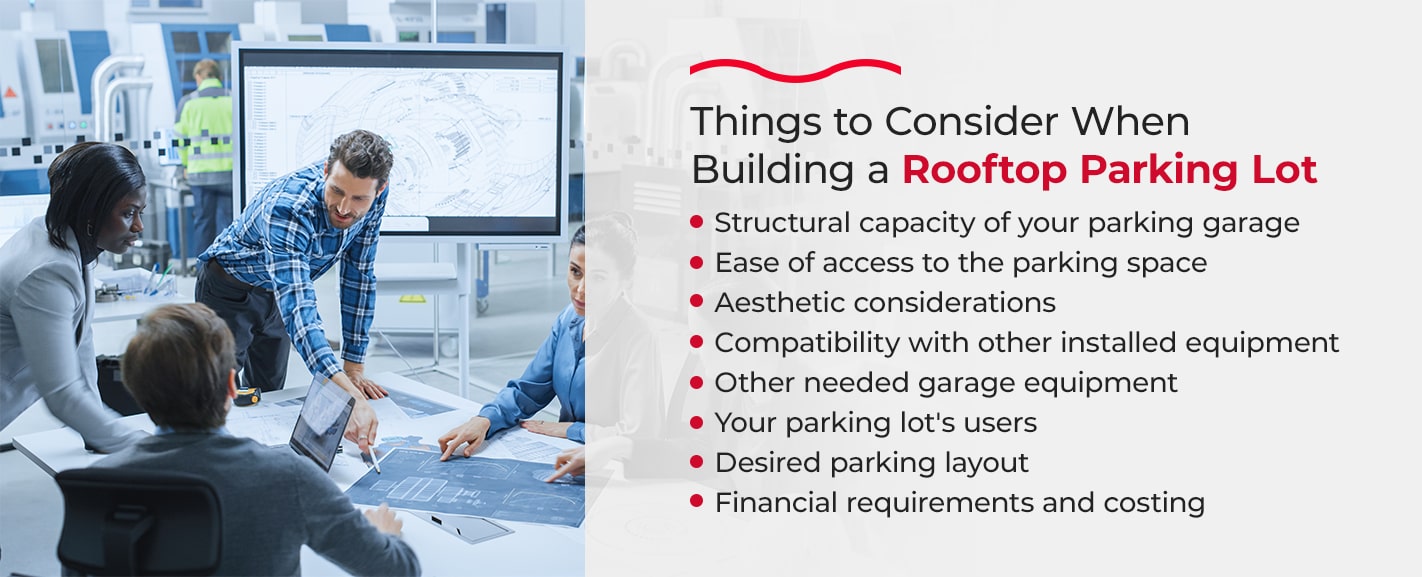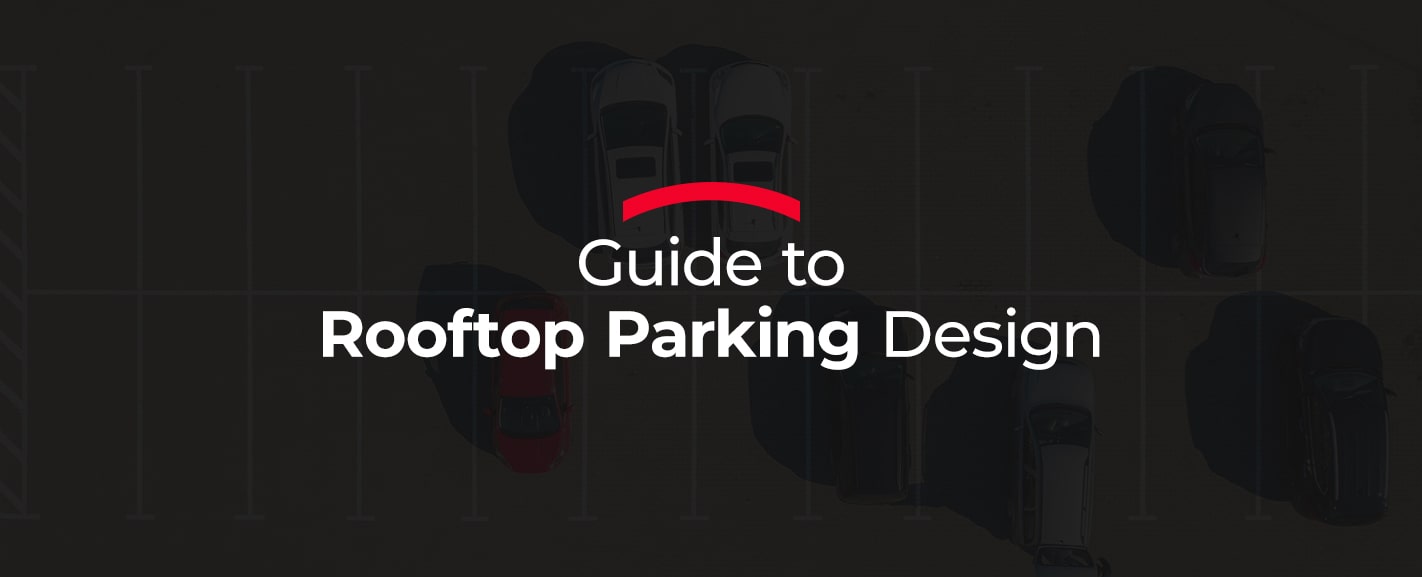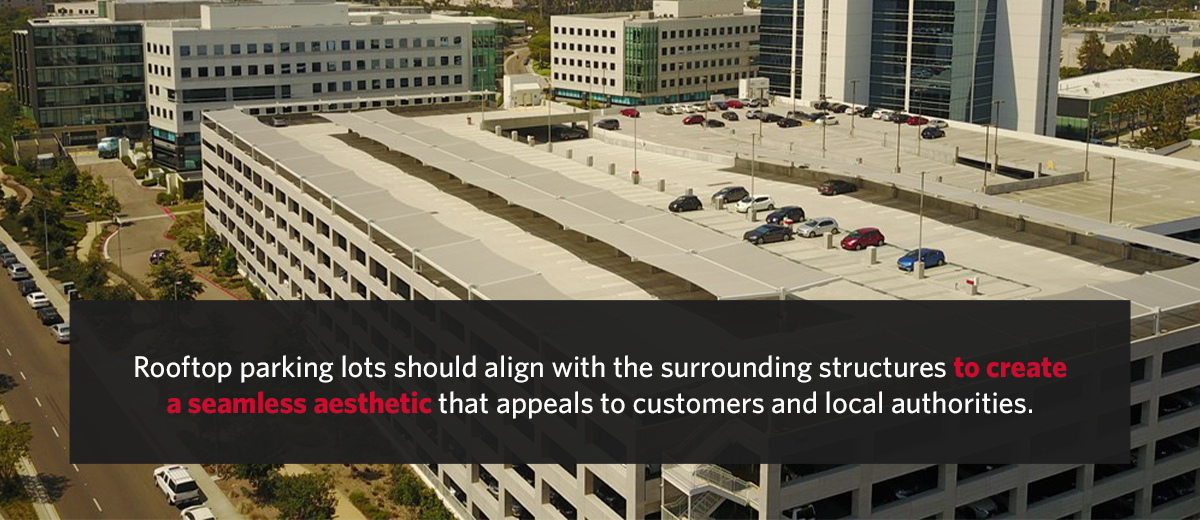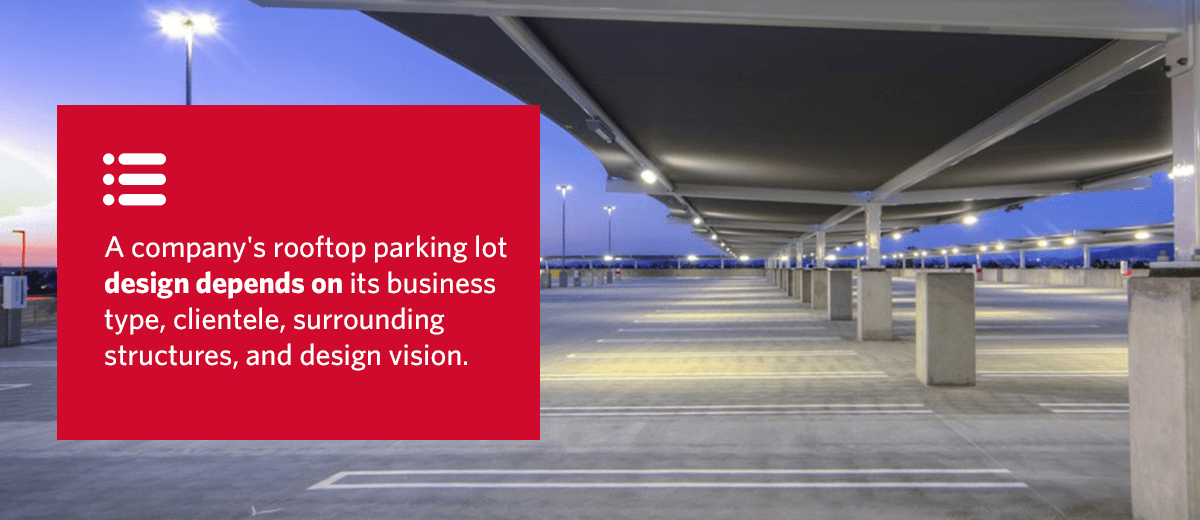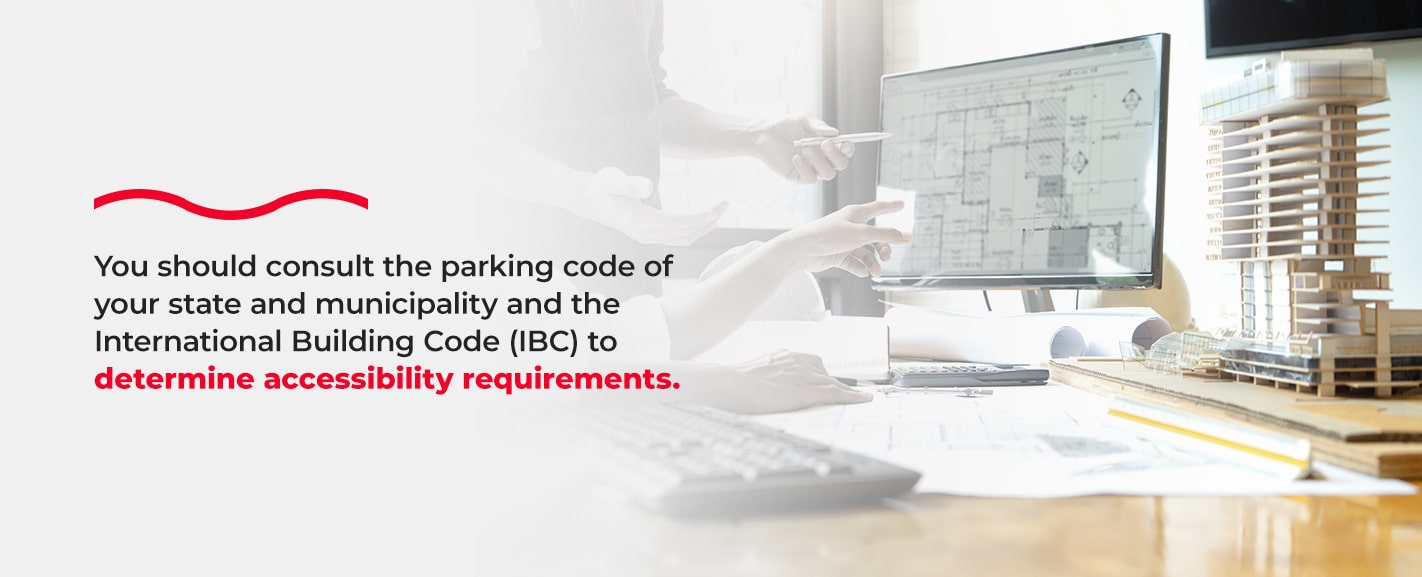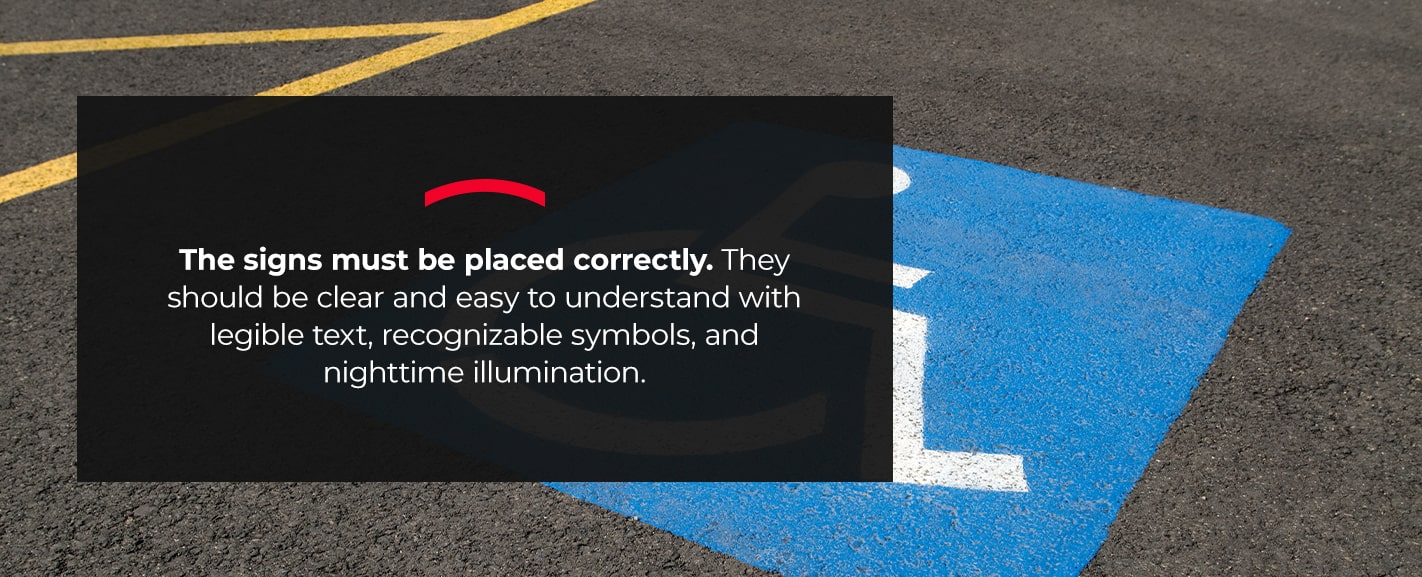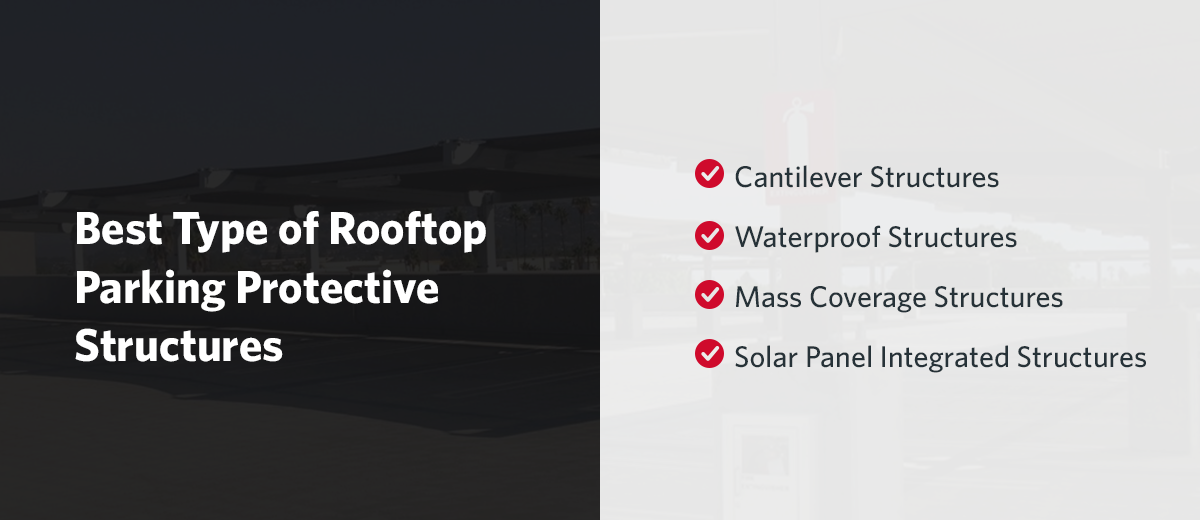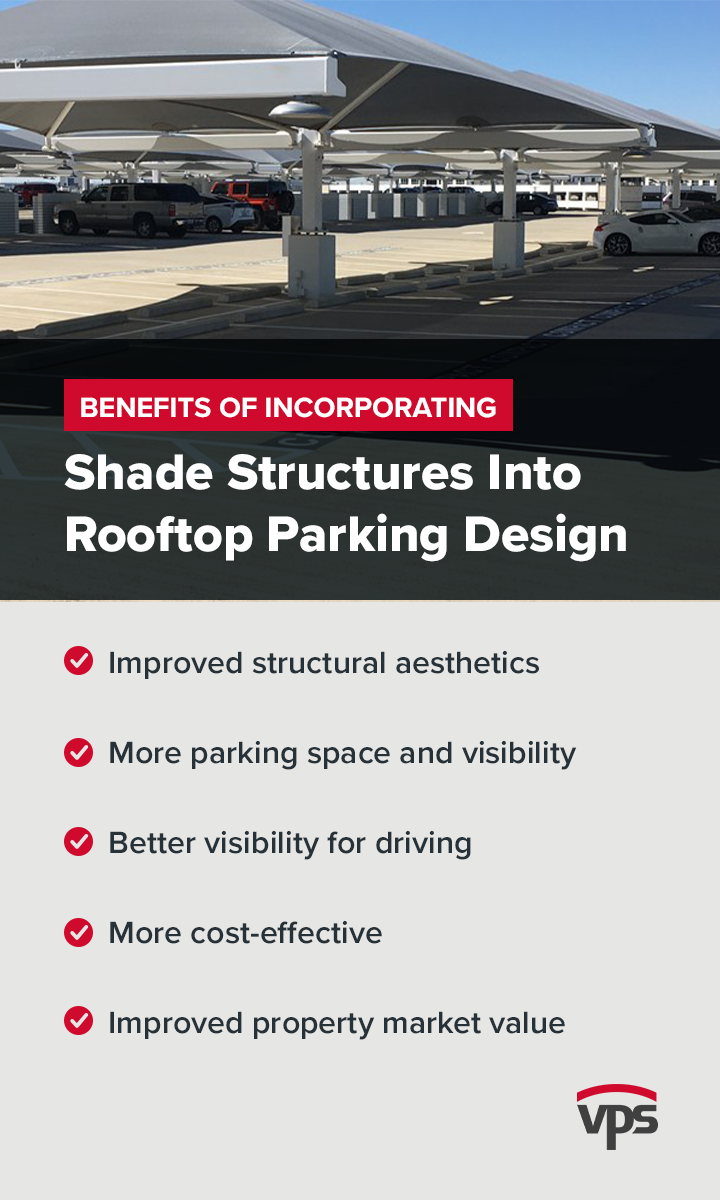For your parking garage design to provide the best user experience, you need to integrate structure and function with aesthetics and human considerations. Achieving this requires considering several factors, such as structural capacity and equipment compatibility. Design is the key foundational phase that allows businesses to create rooftop parking structures that resonate with their vision and offer their customers a safe, convenient place to park.
This guide to rooftop parking design can help you create a functional, visually appealing, and user-friendly structure. Read on to discover the design standards and building codes your rooftop parking garage should comply with and how to avoid mistakes during the design phase.
Read the full article or jump to a specific section:
- Things to Consider When Building a Rooftop Parking Lot
- Requirements for Designing and Building a Rooftop Parking Lot
- Steps to Designing a Rooftop Parking Lot
- What is The Best Type of Rooftop Parking Protective Structure?
- Benefits of Incorporating Shade Structures into Rooftop Parking Design
- Contact VPS for Your Shade Structures
